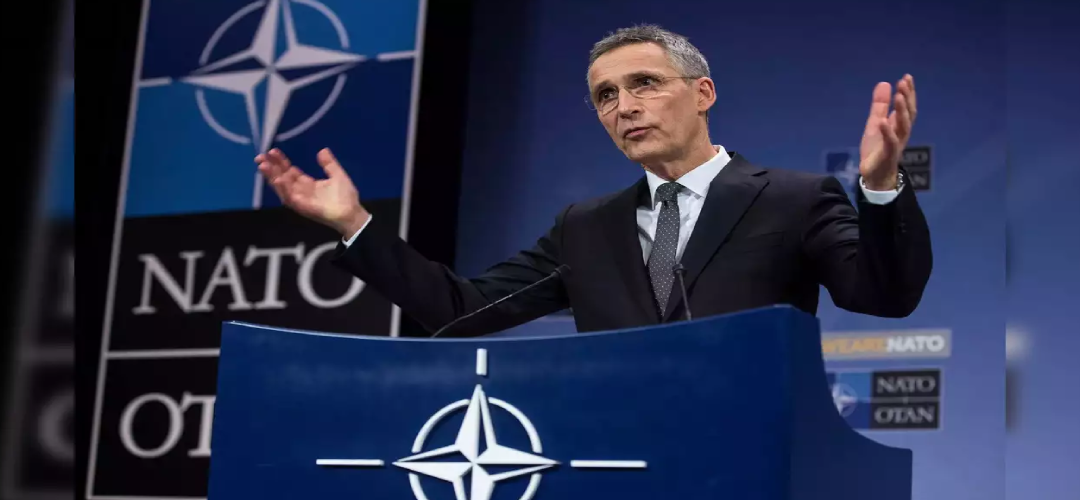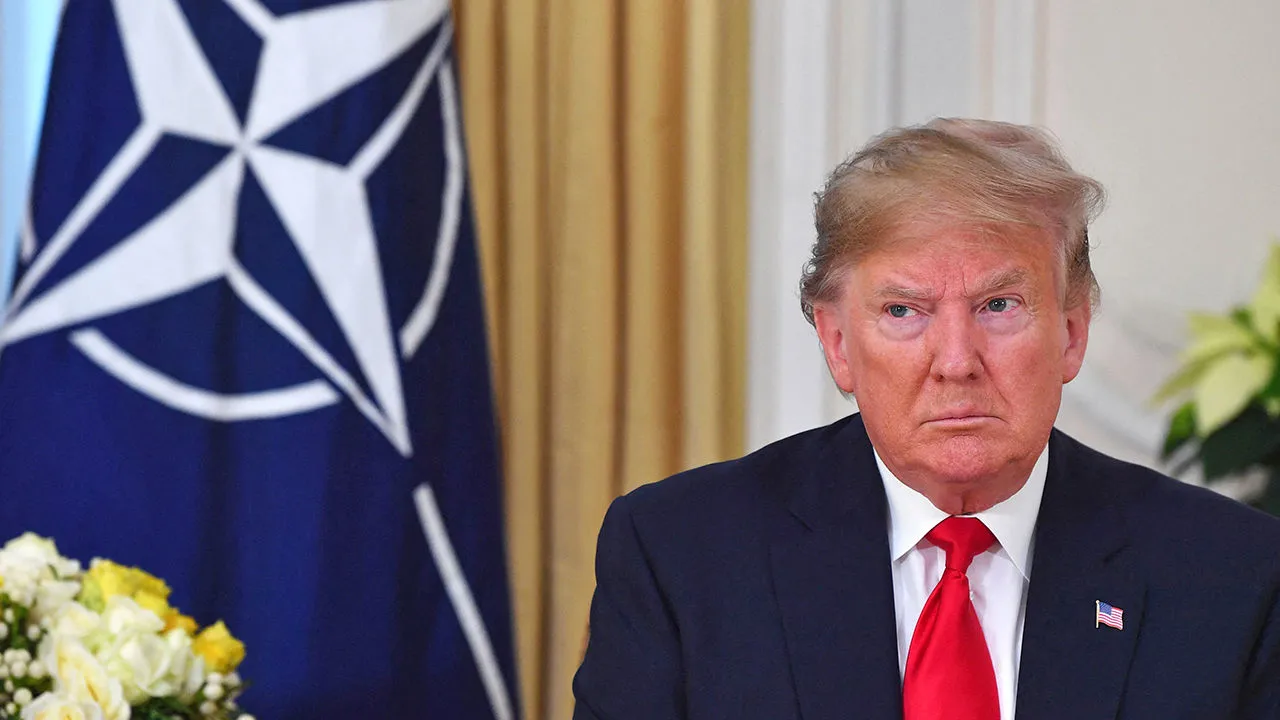Is NATO Gearing Up for Trump?
April 13, 2024 | Expert Insights

As the possibility of Donald Trump returning to the White House looms larger with each passing day, NATO is making strategic adjustments to bolster its defence capabilities, particularly focusing on Europe and Ukraine. This move is increasingly relevant considering recent developments in the U.S. political landscape.
According to a new Reuters/Ipsos poll, U.S. President Joe Biden has marginally widened his lead over Donald Trump ahead of the November presidential election. Biden's lead, now at 4 points up from a 1-point lead, comes as Trump prepares for the first of four upcoming criminal trials. These political dynamics underscore the uncertainty surrounding U.S. foreign policy and defence commitments, prompting NATO to take a more autonomous stance in ensuring the security of Europe and its periphery.
In February, Mr Trump really set the cat amongst the pigeons when in a public statement he made in February, he bluntly said that the Russians could do "whatever the hell they want" to any NATO member that does not spend two per cent of its GDP on defence. Trump has made similar incendiary comments before, and this time, Europe is taking these threats seriously.
Background
A notably contentious relationship with NATO marked Donald Trump's previous term. Trump frequently criticized the alliance, focusing particularly on what he perceived as inadequate defence spending by member states and questioning the value of the U.S. contribution to European security. His stark rhetoric and threats to scale back U.S. military support unless other countries increased their spending contributions created a rift within NATO, fostering uncertainty about the future commitment of the U.S. to the alliance.
A worried NATO, confronted by a belligerent Russia on its eastern frontiers, is faced with the real possibility of a recalcitrant incumbent returning to the White House. Unsurprisingly, a flurry of proactive steps is being advocated to bolster Europe’s defence mechanisms in preparation for a potential decrease in U.S. military involvement under a Trump-led administration. This urgency was palpable at this year's Munich Security Conference, often described as the "Davos of Defence." The conference underscored the broader implications of Trump's foreign policy approach and its potential impact on international security structures.
This preparation by NATO is a direct response to the unpredictability associated with Trump's foreign policy stances. It reflects a strategic shift towards greater European autonomy in defence matters, aiming to strengthen the alliance's operational readiness and resilience. The steps being taken include enhancing rapid response capabilities, investing in critical infrastructure, reinforcing cyber defences, and ensuring that NATO remains robust and responsive to the evolving geopolitical landscape, regardless of shifts in U.S. policy. This move towards self-reliance is crucial in maintaining stability and security in the region, particularly considering ongoing tensions and conflicts such as the war in Ukraine.
That the EU takes the challenge seriously was clearly demonstrated in March when it was decided to increase the financial ceiling of the European Peace Facility (EPF) by €5 billion in current prices and ringfence this top-up for Ukraine by establishing a dedicated Ukraine Assistance Fund (UAF) within the EPF.

Analysis
NATO’s strategic pivot focuses on enhancing the alliance's operational readiness and ability to respond rapidly to threats. Central to this initiative is a substantial increase in investments in military infrastructure and cybersecurity, areas deemed essential for maintaining a robust defence mechanism in an increasingly unpredictable geopolitical environment.
The drive for a reinforced NATO defence strategy is a collective effort led by prominent member states such as Germany and France. These nations, recognizing the strategic necessity imposed by their geopolitical context and historical experiences with Russian aggression, are at the forefront in advocating for a stronger, more self-reliant European defence posture. Their support is crucially bolstered by Eastern European countries, whose proximity to Russia instils a direct and acute perception of threat, enhancing their commitment to the alliance’s goals.
At the centre of these strategic adjustments is NATO Secretary-General Jens Stoltenberg. His leadership is pivotal in promoting unity among member states and encouraging increased defence investments. Stoltenberg's role involves strategic oversight and fostering consensus among diverse member states, each with its own national security priorities and economic constraints. His advocacy aims to ensure that NATO remains resilient and effective in its defence capabilities, irrespective of the level of U.S. military involvement in Europe.
An integral aspect of reinforcing NATO's defence capabilities involves deepening strategic partnerships within Europe and on a global scale. These alliances are vital for formulating a cohesive defence strategy capable of countering a range of emerging threats. A key component in this strategy is collaborating with the European Union through the Permanent Structured Cooperation (PESCO). PESCO represents a commitment among EU member states to collaborate more closely on security and defence matters, and its integration with NATO's objectives is crucial for achieving a unified approach to defence across Europe.
Despite the proactive measures of NATO and its European allies, the path forward presents several formidable challenges. One of the primary concerns is maintaining consistent defence spending among member states. Financial contributions to defence are often subject to national budgetary constraints and differing political priorities, which can lead to funding fluctuations and impact the alliance's overall readiness.
Additionally, internal divisions within NATO—stemming from varying threat perceptions and strategic priorities among member countries—pose significant obstacles to achieving a fully unified defence strategy. These divisions can complicate decision-making processes and delay critical responses to security threats.
Furthermore, managing relations with Russia remains a persistent challenge. Russia’s aggressive actions and foreign policy manoeuvres in Eastern Europe and beyond necessitate a cautious yet assertive approach from NATO, balancing deterrence with diplomatic engagement.
The evolving political landscape in the U.S. adds another layer of complexity. Changes in U.S. foreign policy, particularly with the potential return of Donald Trump to the presidency, could influence NATO’s strategic decisions and its relationship with European allies. This unpredictable factor requires NATO to be adaptable and prepared for shifts in U.S. involvement, ensuring that its defence posture remains robust and responsive to both current and emergent threats.
Assessment
- Initiatives like the Permanent Structured Cooperation (PESCO) within the EU are crucial in this context. These partnerships aim to create a unified defence posture that can operate effectively irrespective of the political climate in the U.S. This approach not only prepares NATO for potential shifts in U.S. policy under Trump but also strengthens the overall European response to global threats, particularly from Russia and China.
- NATO faces significant challenges in maintaining unity among its members, managing consistent defence spending, and handling its relations with Russia. The unpredictable U.S. political landscape exacerbates these challenges. These dynamics require careful navigation to maintain strategic cohesion and ensure effective defence readiness, independent of shifting U.S. foreign policies.
- For long, major NATO members like Germany made hay while the American sun shone, allowing their economy to boom at the cost of miserly defence spending. Now, the chickens have come home to roost as Europe stares at the stark possibility of war in Europe and the Far East with Russia and a resurgent China, respectively.








Comments